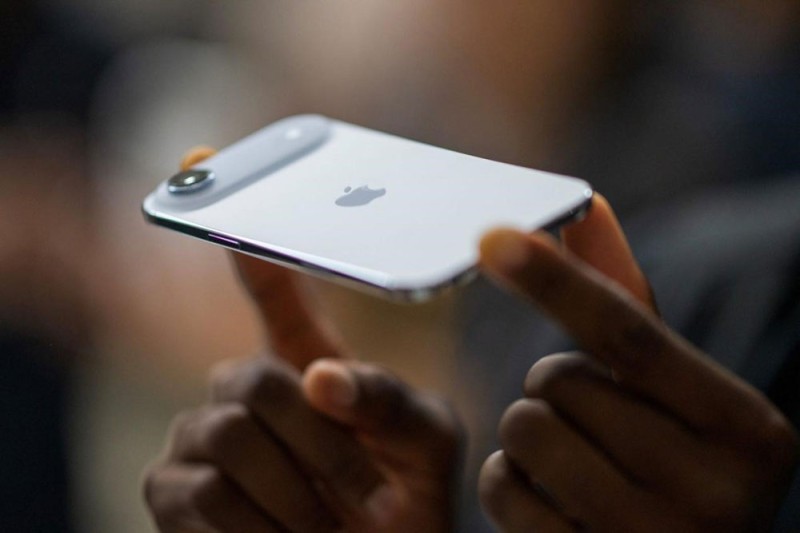
苹果新款iPhone Air堪称该公司近年来最大胆的设计宣言,其5.6毫米的机身厚度缔造了iPhone史上最薄手机。但对于考虑选购这款超薄设备的消费者而言,了解其背后的“取舍”至关重要。尽管iPhone Air搭载了性能强劲的A19 Pro芯片,起售价达999美元,但为实现纤薄机身,它做出了重大妥协。
相机系统受限:最重大的功能舍弃
最为显著的妥协体现在相机系统上。其他iPhone 17机型均配备多颗后置摄像头,而iPhone Air仅搭载单颗4800万像素的融合式摄像头。这意味着它舍弃了标准版iPhone 17配备的超广角镜头,用户将无法拍摄广阔风景照,也无法进行微距摄影。
超广角镜头缺失意味着用户将无法拍摄0.5倍变焦照片——这项功能在近年iPhone机型中已成标配。此外,iPhone Air的长焦拍摄能力仅限于通过数字裁剪实现2倍光学级变焦,而iPhone 17 Pro配备专用长焦镜头,可实现最高8倍光学级变焦拍摄。
视频录制能力也大打折扣。iPhone Air不支持电影模式、ProRes格式录制,也不具备Pro系列机型的其他专业视频功能。尽管它能录制4K杜比视界视频,但帧率上限为60帧/秒,而Pro系列机型的这一参数可达120帧/秒。
电池续航存忧,技术进步难掩短板
尽管苹果宣称iPhone Air具备“全天续航”能力,但其搭载的3149毫安时电池仅能支持27小时视频播放——相比之下,标准版iPhone 17的视频播放时长可达30小时,Pro系列机型则为33至39小时。这一续航表现与去年的iPhone 16 Pro相当,但相较于同代其他机型,明显处于劣势。
苹果专门为iPhone Air推出售价99美元的MagSafe磁吸电池,此举似乎暗示公司已意识到其电池续航存在局限。这款配件可将视频播放时长延长至40小时,但也为这款主打超薄设计的设备增加了额外的机身厚度与成本,与“超薄设计”理念相悖。
性能与散热管理的权衡取舍
iPhone Air虽搭载旗舰级A19 Pro芯片,但仅配备5核GPU,而iPhone 17 Pro系列则采用6核GPU。更令人担忧的是潜在的散热问题。iPhone Air未配备Pro机型采用的蒸汽室散热系统,这引发了人们对其在高负载任务下持续性能表现的担忧。
行业观察人士注意到,苹果在介绍iPhone Air时对散热管理问题只字未提,而在介绍Pro系列机型时则详尽阐述散热技术——这似乎暗示iPhone Air可能存在性能降频或过热问题,尤其是在超薄机身设计本就限制散热能力的情况下。
物理设计妥协
对“极致纤薄”的追求,致使iPhone Air在其他实用性方面做出妥协。iPhone Air在全球范围内均仅支持eSIM(嵌入式SIM卡),取消了物理SIM卡槽,以最大程度地释放内部空间。此举虽提升了安全性,却可能给旅行用户或eSIM支持有限地区的用户带来不便。
此外,该设备仅在听筒位置配备单扬声器,缺少其他iPhone机型标配的底部外放扬声器。这可能影响媒体播放效果和免提通话音质表现。
哪些人群适合购买iPhone Air?
iPhone Air将目标用户定位为那些更看重美学设计与便携性,而非追求极致功能的消费者。其机身重量仅为165克,远轻于iPhone 17 Pro的206克。但消费者需权衡:视觉吸引力是否足以弥补相机多功能性、续航能力及潜在散热性能方面的不足。
对于摄影爱好者、内容创作者或频繁使用超广角拍摄与长焦功能的用户,尽管iPhone 17或Pro系列机身更厚,但它们在功能上具备更高的使用价值。iPhone Air的单摄系统虽具备基本拍摄能力,然而在相机多功能性这一衡量现代旗舰智能手机的关键指标上,实属倒退。
iPhone Air将于下周五(9月19日)正式发售,本周五(9月12日)开启预售。潜在买家需权衡其无可争议的外观吸引力与功能局限,判断这款最薄iPhone是否契合自身需求。
为撰写本报道,《财富》杂志使用生成式人工智能协助完成初稿。在发布前,编辑已核实信息准确性。(*)
译者:中慧言-王芳
苹果新款iPhone Air堪称该公司近年来最大胆的设计宣言,其5.6毫米的机身厚度缔造了iPhone史上最薄手机。但对于考虑选购这款超薄设备的消费者而言,了解其背后的“取舍”至关重要。尽管iPhone Air搭载了性能强劲的A19 Pro芯片,起售价达999美元,但为实现纤薄机身,它做出了重大妥协。
相机系统受限:最重大的功能舍弃
最为显著的妥协体现在相机系统上。其他iPhone 17机型均配备多颗后置摄像头,而iPhone Air仅搭载单颗4800万像素的融合式摄像头。这意味着它舍弃了标准版iPhone 17配备的超广角镜头,用户将无法拍摄广阔风景照,也无法进行微距摄影。
超广角镜头缺失意味着用户将无法拍摄0.5倍变焦照片——这项功能在近年iPhone机型中已成标配。此外,iPhone Air的长焦拍摄能力仅限于通过数字裁剪实现2倍光学级变焦,而iPhone 17 Pro配备专用长焦镜头,可实现最高8倍光学级变焦拍摄。
视频录制能力也大打折扣。iPhone Air不支持电影模式、ProRes格式录制,也不具备Pro系列机型的其他专业视频功能。尽管它能录制4K杜比视界视频,但帧率上限为60帧/秒,而Pro系列机型的这一参数可达120帧/秒。
电池续航存忧,技术进步难掩短板
尽管苹果宣称iPhone Air具备“全天续航”能力,但其搭载的3149毫安时电池仅能支持27小时视频播放——相比之下,标准版iPhone 17的视频播放时长可达30小时,Pro系列机型则为33至39小时。这一续航表现与去年的iPhone 16 Pro相当,但相较于同代其他机型,明显处于劣势。
苹果专门为iPhone Air推出售价99美元的MagSafe磁吸电池,此举似乎暗示公司已意识到其电池续航存在局限。这款配件可将视频播放时长延长至40小时,但也为这款主打超薄设计的设备增加了额外的机身厚度与成本,与“超薄设计”理念相悖。
性能与散热管理的权衡取舍
iPhone Air虽搭载旗舰级A19 Pro芯片,但仅配备5核GPU,而iPhone 17 Pro系列则采用6核GPU。更令人担忧的是潜在的散热问题。iPhone Air未配备Pro机型采用的蒸汽室散热系统,这引发了人们对其在高负载任务下持续性能表现的担忧。
行业观察人士注意到,苹果在介绍iPhone Air时对散热管理问题只字未提,而在介绍Pro系列机型时则详尽阐述散热技术——这似乎暗示iPhone Air可能存在性能降频或过热问题,尤其是在超薄机身设计本就限制散热能力的情况下。
物理设计妥协
对“极致纤薄”的追求,致使iPhone Air在其他实用性方面做出妥协。iPhone Air在全球范围内均仅支持eSIM(嵌入式SIM卡),取消了物理SIM卡槽,以最大程度地释放内部空间。此举虽提升了安全性,却可能给旅行用户或eSIM支持有限地区的用户带来不便。
此外,该设备仅在听筒位置配备单扬声器,缺少其他iPhone机型标配的底部外放扬声器。这可能影响媒体播放效果和免提通话音质表现。
哪些人群适合购买iPhone Air?
iPhone Air将目标用户定位为那些更看重美学设计与便携性,而非追求极致功能的消费者。其机身重量仅为165克,远轻于iPhone 17 Pro的206克。但消费者需权衡:视觉吸引力是否足以弥补相机多功能性、续航能力及潜在散热性能方面的不足。
对于摄影爱好者、内容创作者或频繁使用超广角拍摄与长焦功能的用户,尽管iPhone 17或Pro系列机身更厚,但它们在功能上具备更高的使用价值。iPhone Air的单摄系统虽具备基本拍摄能力,然而在相机多功能性这一衡量现代旗舰智能手机的关键指标上,实属倒退。
iPhone Air将于下周五(9月19日)正式发售,本周五(9月12日)开启预售。潜在买家需权衡其无可争议的外观吸引力与功能局限,判断这款最薄iPhone是否契合自身需求。
为撰写本报道,《财富》杂志使用生成式人工智能协助完成初稿。在发布前,编辑已核实信息准确性。(*)
译者:中慧言-王芳
Apple’s new iPhone Air represents the company’s boldest design statement in years, delivering the thinnest iPhone ever made at just 5.6mm thick. But for buyers considering this ultra-slim device, understanding the trade-offs is crucial. Despite packing the powerful A19 Pro chip and starting at $999, the iPhone Air makes significant compromises to achieve its svelte profile.
Camera system limitations are the biggest sacrifice
The most substantial compromise involves the camera system. While other iPhone 17 models feature multiple rear cameras, the iPhone Air sports only a single 48-megapixel “Fusion” camera. This eliminates the ultra-wide camera found on the standard iPhone 17, which offers expansive landscape shots and macro photography capabilities.
The lack of an ultra-wide lens means iPhone Air users lose the ability to capture 0.5x shots, a feature that has become standard on recent iPhones. Additionally, the Air’s telephoto capability is limited to 2x optical-quality zoom through digital cropping, compared to the iPhone 17 Pro’s dedicated telephoto lens offering up to 8x optical quality shots.
Video-recording capabilities also take a hit. The iPhone Air lacks cinematic mode, ProRes recording, and other professional video features available on Pro models. While it can record 4K Dolby Vision video, it’s capped at 60fps compared to the Pro models’ 120fps capability.
Battery-life concerns despite engineering advances
Despite Apple’s claim of “all-day battery life,” the iPhone Air’s 3,149 mAh battery delivers 27 hours of video playback, compared to 30 hours on the standard iPhone 17 and 33-39 hours on Pro models. This matches the battery performance of last year’s iPhone 16 Pro but falls short of current-generation alternatives.
Apple’s decision to create a dedicated $99 MagSafe battery pack specifically for the iPhone Air suggests the company acknowledges battery limitations. This accessory can extend usage to 40 hours of video playback but adds bulk and cost to the ultra-thin design proposition.
Performance and thermal management trade-offs
While the iPhone Air includes the flagship A19 Pro chip, it features a 5-core GPU compared to the 6-core GPU in iPhone 17 Pro models. More concerning are potential thermal management issues. The Air lacks the vapor chamber-cooling system found in Pro models, raising questions about sustained performance during intensive tasks.
Industry observers have noted Apple’s silence regarding thermal management in the iPhone Air, unlike the detailed thermal discussions for Pro models. This suggests potential throttling or overheating issues, particularly given the ultra-thin form factor that limits heat dissipation.
Physical design limitations
The pursuit of thinness forces other practical compromises. The iPhone Air is eSIM-only globally, eliminating the physical SIM card slot to maximize internal space. While this provides enhanced security, it may create complications for travelers or users in regions with limited eSIM support.
The device also features only a single speaker in the earpiece, lacking the bottom-firing speaker found on other iPhone models. This could impact audio quality for media consumption and speakerphone calls.
Who should consider the iPhone Air?
The iPhone Air targets users who prioritize aesthetics and portability over maximum functionality. At 165 grams, it’s significantly lighter than the 206-gram iPhone 17 Pro. However, buyers should carefully consider whether the visual appeal justifies the compromises in camera versatility, battery life, and potentially thermal performance.
For photography enthusiasts, content creators, or users who frequently rely on ultra-wide shots and extended zoom capabilities, the iPhone 17 or Pro models offer better value despite their added thickness. The Air’s single-camera system, while capable, represents a step backward in camera versatility that defines modern flagship smartphones.
The iPhone Air launches next Friday, Sept. 19, with pre-orders beginning this Friday, Sept. 12. Prospective buyers should weigh the device’s undeniable aesthetic appeal against these functional limitations to determine if Apple’s thinnest iPhone aligns with their priorities.
For this story, Fortune used generative AI to help with an initial draft. An editor verified the accuracy of the information before publishing.

